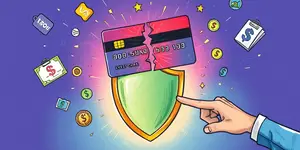
Debt can weigh heavily on your mind and limit your choices. In this comprehensive guide, you’ll discover a transform your financial future approach that helps you break free from credit card chains within just 30 days. By combining clear strategies, expert insights, and a structured plan, you can achieve consistent daily progress checks and build lasting habits toward financial wellness.
In early 2025, U.S. credit card debt soared to an unprecedented level, reaching an all-time high of $1.21 trillion in Q4 2024 before a slight dip to $1.18 trillion in Q1 2025. With the average balance per cardholder climbing to $7,321 and APRs peaking near 29.99%, more families are stuck in a cycle of high-interest obligations.
Even though delinquency rates have dipped to 3.05%, the persistence of the minimum payment culture is a trap that prolongs repayment and inflates total interest costs dramatically over time. Rising living expenses and stagnant wages force many to rely on credit for everyday necessities, turning cards into financial lifelines rather than convenience tools.
Before diving into solutions, it’s crucial to understand the forces that led to mounting credit card balances. Several economic and psychological factors play significant roles.
Identifying these triggers is the first step to regaining control. By acknowledging how each factor contributes, you can tailor your approach and avoid repeating past mistakes.
Beyond the statistics lies the real cost of credit card debt: stress, anxiety, and strained relationships. Worrying about next month’s minimum payment can keep you up at night, while persistent debt holds back dreams of home ownership, travel, or even career changes.
Low credit scores limit your access to favorable loans and raise insurance premiums. The emotional burden often manifests in sleepless nights and frayed nerves, affecting work performance and personal connections. Breaking this cycle delivers immediate relief and long-term peace of mind.
This intensive program distills debt elimination into clear, actionable steps. Commit to each phase fully, and you’ll build momentum that transforms your mindset and your bank balance.
Dividing your plan into manageable weekly goals makes the process feel less daunting and keeps you accountable at each stage.
These weekly targets keep you accountable and ensure that small victories accumulate into substantial debt reduction by day 30.
This summary empowers you to pick the strategy that aligns with your financial profile and psychological preferences.
Online calculators can project payoff timelines and compare consolidation options. Budgeting apps streamline expense tracking and send alerts when you approach spending limits. Nonprofit financial counseling services offer personalized advice at low or no cost. Automation platforms handle recurring payments seamlessly, ensuring you never miss a due date.
Many people stumble when a promotional period ends, leading to sudden interest spikes. Be vigilant about promotional deadlines and have a backup repayment plan ready.
Avoid the minimum-only mindset that banks encourage. Paying only the bare minimum allows interest to balloon your balance over time, keeping you trapped in a cycle of debt.
Debt payoff is as much about psychology as it is about mathematics. Celebrate each cleared balance and every percentage point drop in your overall debt load. These achievements build psychological momentum for long-term success.
Visualize your goals—be it a vacation, home down payment, or a debt-free lifestyle. Track progress on a chart, share wins with friends or support groups, and remind yourself why you committed to this journey.
By day 30, you’ll have laid the foundation for a debt-free future. Keep the habits you’ve formed—daily reviews, automatic payments, and mindful spending—to ensure that your financial transformation endures well beyond the detox period.
References













